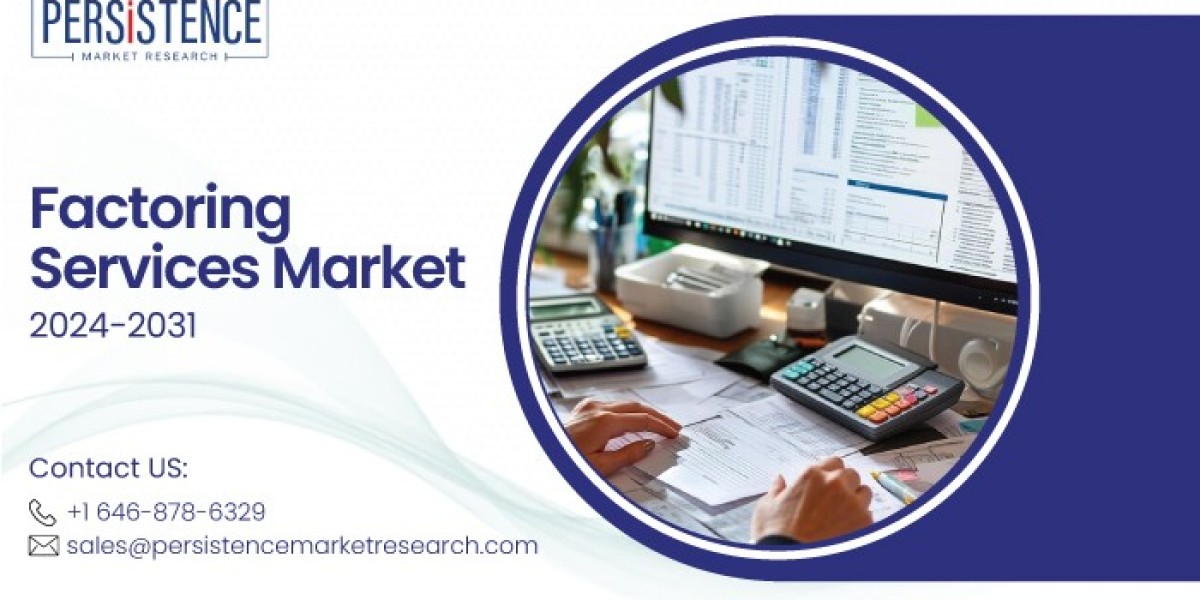Maintaining a steady cash flow is one of the biggest challenges for many businesses, especially those dealing with long payment terms or slow-paying customers. Factoring services offer a powerful solution by allowing businesses to convert their unpaid invoices into immediate cash, providing much-needed working capital without taking on debt. However, there are different types of factoring services available, each designed to meet specific business needs and risk profiles.
1. Recourse Factoring
Recourse factoring is the most common type of factoring service. In this arrangement, the business remains responsible for repaying the factoring company if the customer fails to pay the invoice. Essentially, if the customer defaults on the payment, the business must either buy back the invoice or repay the advance received from the factoring company.
Read More: https://www.persistencemarketresearch.com/market-research/factoring-services-market.asp
How it works:
- The factoring company advances a percentage of the invoice (typically 70-90%).
- The business remains responsible for the invoice if the customer does not pay within the specified period.
- Once the customer pays, the factoring company releases the remaining balance to the business, minus fees.
Best for:
- Businesses with reliable, creditworthy customers who typically pay on time.
- Companies looking for lower factoring fees, as recourse factoring generally comes with reduced costs due to the lower risk for the factoring company.
Key benefit:
- Lower fees: Recourse factoring typically has lower fees compared to other options since the business assumes responsibility for unpaid invoices.
2. Non-Recourse Factoring
In non-recourse factoring, the factoring company assumes the risk of non-payment due to customer insolvency or bankruptcy. If the customer fails to pay, the factoring company bears the loss, and the business is not required to repay the advance. This makes non-recourse factoring more protective for the business but also comes with higher fees due to the increased risk for the factoring company.
How it works:
- The factoring company advances a percentage of the invoice value to the business.
- The factoring company assumes the risk of non-payment if the customer becomes insolvent or defaults.
- Once the invoice is paid, the factoring company releases the remaining funds, minus fees.
Best for:
- Businesses working with high-risk or less creditworthy customers who may be more likely to default.
- Companies looking for protection against bad debt or customer insolvency.
Key benefit:
- Reduced risk: The business is not responsible for customer non-payment, providing more security against bad debts.
3. Spot Factoring
Spot factoring allows businesses to choose which invoices they want to factor, rather than factoring all of their receivables. This type of factoring offers greater flexibility for companies that only want to factor certain invoices or need cash flow for specific periods. Spot factoring is ideal for businesses with occasional cash flow needs.
How it works:
- The business selects specific invoices to sell to the factoring company.
- The factoring company advances a percentage of the invoice value and handles the collection process.
- Once the customer pays, the business receives the remaining balance, minus fees.
Best for:
- Businesses that need flexibility and do not want to factor all their invoices.
- Companies looking for short-term financing for occasional cash flow needs.
Key benefit:
- Flexibility: Spot factoring allows businesses to factor specific invoices as needed, without long-term commitments.
4. Invoice Discounting
Invoice discounting differs from traditional factoring because the business retains control over collections. In invoice discounting, the factoring company advances funds based on the unpaid invoices, but the business is responsible for collecting payment from customers. This type of financing is often kept confidential, so customers are unaware of the factoring arrangement.
How it works:
- The factoring company advances a portion of the unpaid invoices.
- The business remains responsible for collecting payment from customers.
- The factoring company is repaid once the invoice is settled.
Best for:
- Businesses that want to maintain control over customer relationships and collections.
- Companies seeking confidential financing, where customers do not know about the factoring arrangement.
Key benefit:
- Confidentiality: The factoring arrangement is not disclosed to customers, allowing businesses to manage collections directly.
5. Maturity Factoring
In maturity factoring, the factoring company releases the funds only when the invoice is due, regardless of when the customer pays. This option is often used to provide businesses with a predictable source of cash flow based on the due dates of their invoices.
How it works:
- The factoring company advances funds when the invoice reaches its due date.
- The factoring company collects the payment from the customer when the invoice is due.
- The business receives the remaining balance minus fees.
Best for:
- Businesses looking for predictable cash flow that aligns with invoice due dates.
- Companies that want to avoid fluctuating cash flows by receiving payments based on fixed due dates.
Key benefit:
- Steady cash flow: Businesses receive funds at regular intervals based on invoice due dates, offering more predictable financial management.
6. Reverse Factoring
Reverse factoring is initiated by the buyer rather than the seller. In this arrangement, a large buyer partners with a factoring company to pay its suppliers’ invoices early. The factoring company pays the suppliers at a discount, while the buyer extends its payment terms. This helps suppliers receive payment faster and improves their cash flow, while the buyer benefits from longer payment terms.
How it works:
- The buyer works with a factoring company to pay the supplier’s invoices early.
- The supplier receives early payment from the factoring company, often at a discount.
- The buyer pays the factoring company at a later date.
Best for:
- Large buyers who want to extend payment terms while offering early payment to suppliers.
- Suppliers looking for early payment without pressuring buyers for faster payments.
Key benefit:
- Stronger supplier relationships: Reverse factoring allows suppliers to get paid early, improving cash flow and maintaining positive relationships with buyers.
7. International Factoring
International factoring is designed for businesses involved in cross-border transactions. This type of factoring helps businesses manage the complexities of international trade, such as currency fluctuations, longer payment terms, and foreign customer credit risks. The factoring company often handles collections in foreign countries, reducing the burden on the business.
How it works:
- The business sells its international invoices to a factoring company.
- The factoring company advances a portion of the invoice value and manages collections in the foreign market.
- Once the invoice is paid, the factoring company releases the remaining funds, minus fees.
Best for:
- Businesses involved in international trade that need help managing foreign currency risks and longer payment cycles.
- Companies that want to reduce the burden of cross-border collections.
Key benefit:
- Global reach: International factoring helps businesses navigate the challenges of cross-border transactions, ensuring timely payments and reducing credit risk.
How to Choose the Right Type of Factoring for Your Business
Choosing the right type of factoring service depends on your business’s specific needs, customer base, and financial goals. Here are some key factors to consider:
- Risk Tolerance: If you have reliable customers, recourse factoring may be the best option due to lower fees. However, if you’re concerned about customer insolvency, non-recourse factoring can provide added protection.
- Flexibility: If you only want to factor certain invoices or need financing on an as-needed basis, spot factoring may be the ideal choice.
- Confidentiality: If maintaining control over customer relationships is important, invoice discounting allows you to manage collections while still accessing immediate funds.
- International Trade: If you’re dealing with global customers, international factoring can help manage the complexities of cross-border transactions.
Conclusion
Understanding the different types of factoring services is essential for making the right choice for your business. Whether you need a flexible option like spot factoring, added protection with non-recourse factoring, or specialized support for international trade, factoring can provide the working capital you need to grow and thrive.
By evaluating your business’s cash flow needs, customer credit risk, and growth objectives, you can select the factoring service that best fits your unique requirements and ensures a steady, reliable flow of capital.



